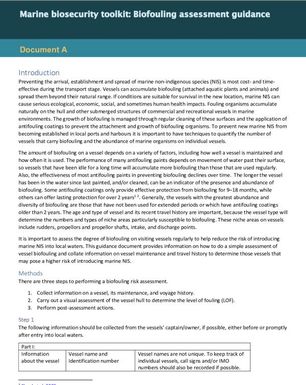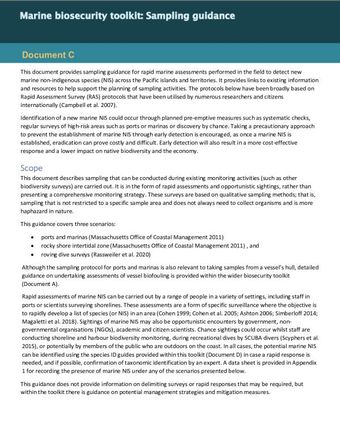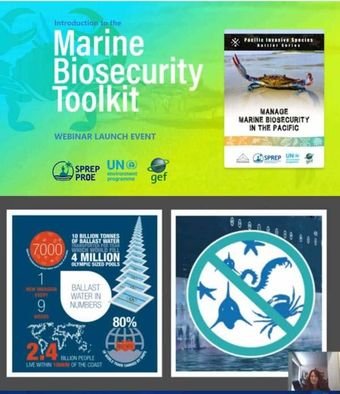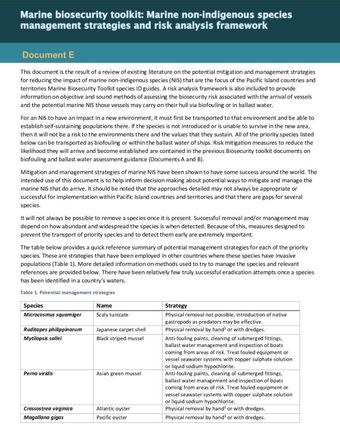Marine Biosecurity Toolkit: Biofouling Assessment Guidance
- Description:
- Preventing the arrival, establishment and spread of marine non-indigenous species (NIS) is most cost- and time- effective during the transport stage. Vessels can accumulate biofouling (attached aquatic plants and animals) and spread them beyond their natural range. If conditions are suitable for survival in the new location, marine NIS can cause serious ecological, economic, social, and sometimes human health impacts. Fouling organisms accumulate naturally on the hull and other submerged structures of commercial and recreational vessels in marine environments. The growth of biofouling is managed through regular cleaning of these surfaces and the application of antifouling coatings to prevent the attachment and growth of biofouling organisms. To prevent new marine NIS from becoming established in local ports and harbours it is important to have techniques to quantify the number of vessels that carry biofouling and the abundance of marine organisms on individual vessels.
- Display date:
- 2022
- Location:
- Pacific Region
- Collections:
- Secretariat of the Pacific Regional Environment Programme (SPREP)
- Publisher:
- Secretariat of the Pacific Regional Environment Programme (SPREP)
- Content partner:
- Secretariat of the Pacific Regional Environment Programme (SPREP)
- Availability:
- Not specified
-
Copyright status: All rights reservedFind out more about what you are able to do with this itemThis item is all rights reserved, with means you'll have to get permission from Secretariat of the Pacific Regional Environment Programme (SPREP) before using it. For more information, please see our use and reuse page.What can I do with this item?Non-infringing useNZ copyright law does not prevent every use of a copyright work, and this item may be hosted by an international institute or organisation. You should consider what you can and cannot do with a copyright work.No sharingYou may not copy and/or share this item with others without further permission. This includes posting it on your blog, using it in a presentation, or any other public use.No modifyingYou are not allowed to adapt or remix this item into any other works.No commercial useYou may not use this item commercially.
Related items
Welcome and warm Pasifik greetings
The information on this site has been gathered from our content partners.
The names, terms, and labels that we present on the site may contain images or voices of deceased persons and may also reflect the bias, norms, and perspective of the period of time in which they were created. We accept that these may not be appropriate today.
If you have any concerns or questions about an item, please contact us.



